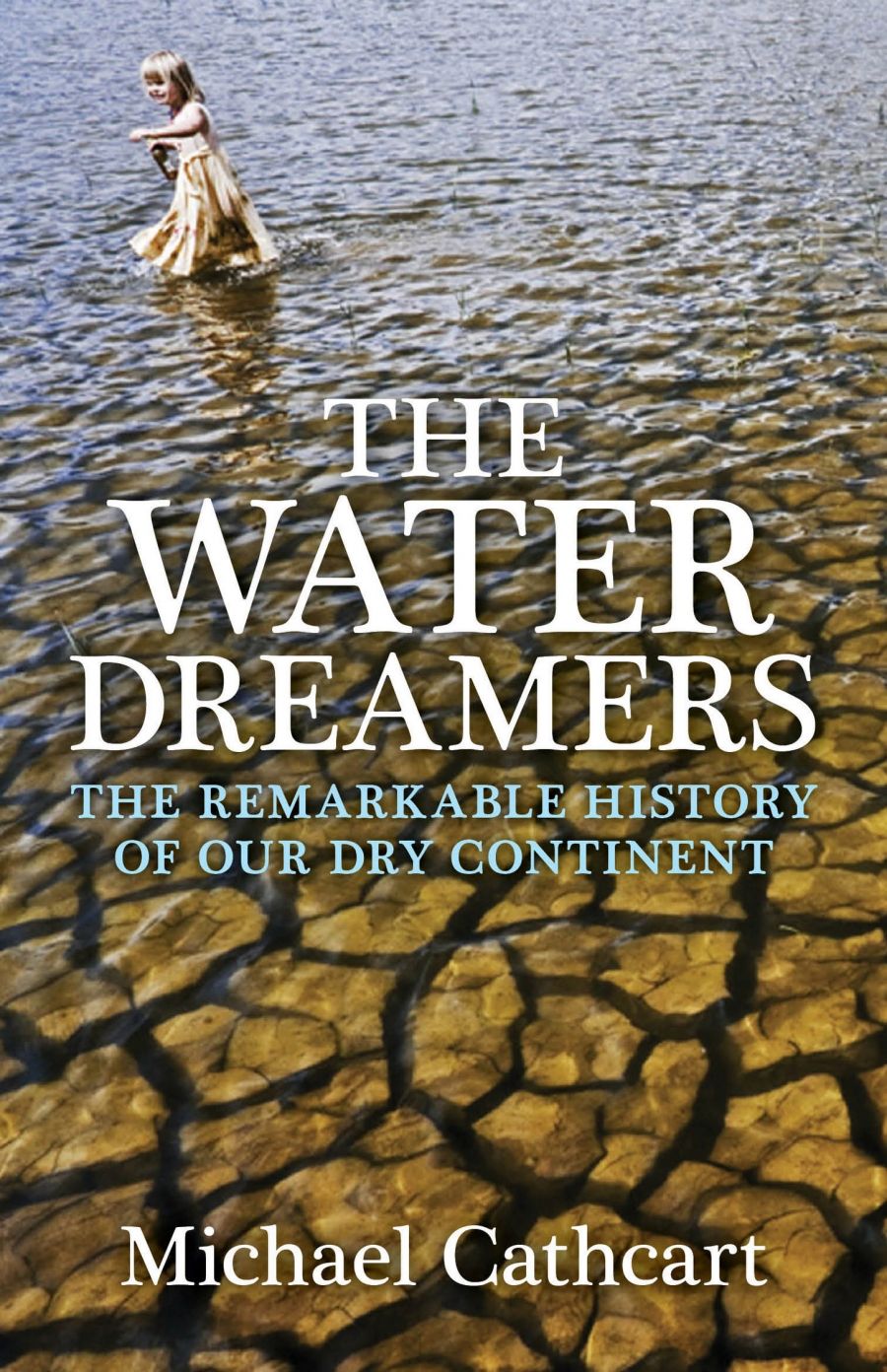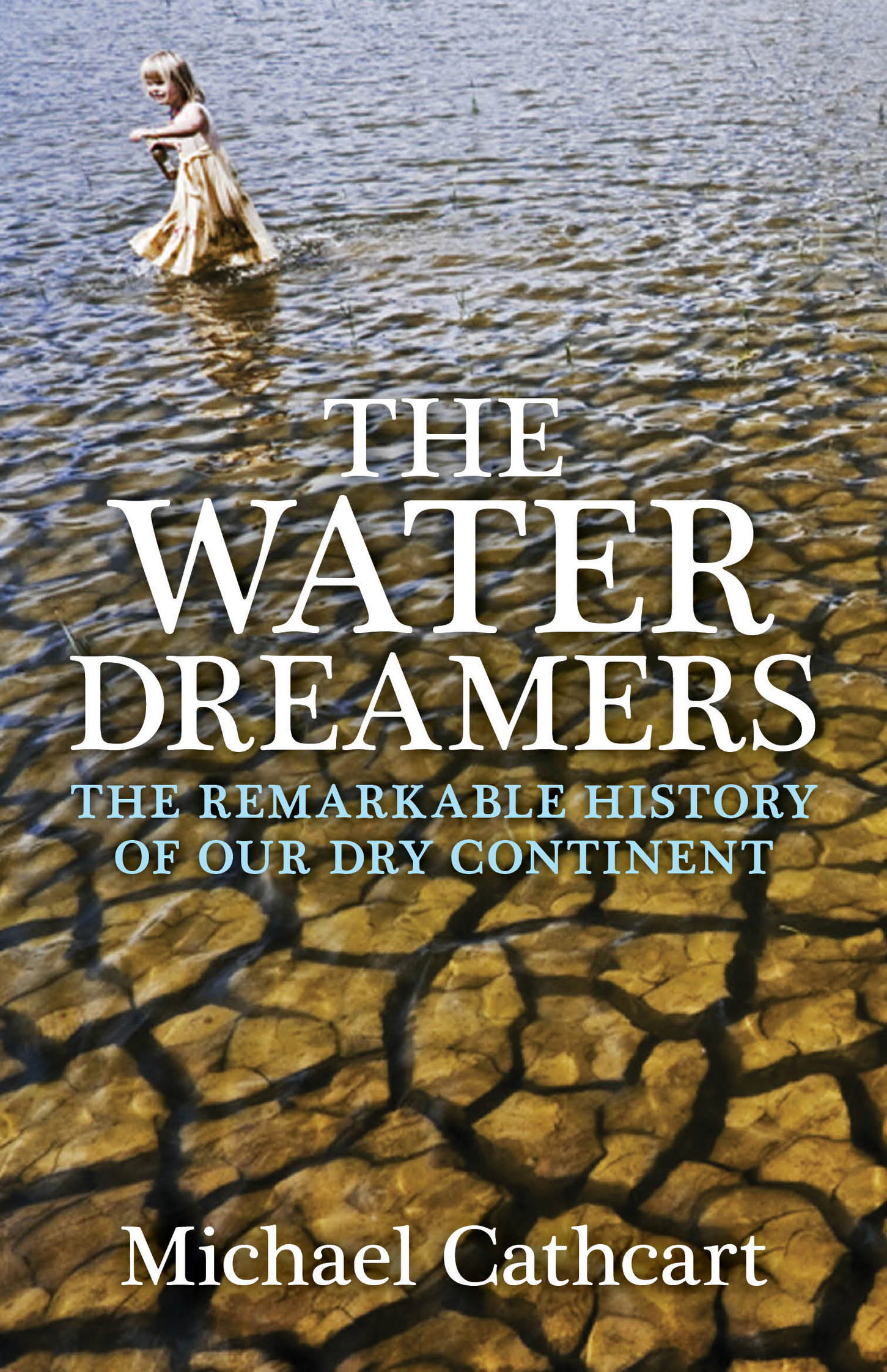
- Free Article: No
- Contents Category: Australian History
- Review Article: Yes
- Article Title: Silent Sea
- Online Only: No
- Custom Highlight Text:
A few years ago, I heard Michael Cathcart speak on ‘the myth of the inland sea’. It was one of the funniest takes on Australian history I have heard. He related how his initially confident search for statements of belief in an inland sea by early Australian colonists petered out in the face of lack of evidence. Certainly, the explorer Charles Sturt believed in an inland sea and in his divine mission to discover it, but by 1845 he knew better. Finding little other evidence of the inland sea as the impetus for exploration, Cathcart decided it must be a creation of historians from Ernest Giles in 1889 to Derek Parker in 2007, with the idea recycled uncritically from book to book. Cathcart intended his research to be an academic thesis in history. How hard it must have been to be his academic supervisor. Each session must have ended in laughter and a mounting sense of desperation. How could an increasing lack of evidence be turned to good thesis account?
- Book 1 Title: The Water Dreamers
- Book 1 Subtitle: The remarkable history of our dry continent
- Book 1 Biblio: Text Publishing, $34.95 pb, 327 pp, 9781921520648
- Book 1 Cover Small (400 x 600):

- Book 1 Cover (800 x 1200):

Instead of the hypothesis he set out to prove, Cathcart shrinks ‘the myth of the inland sea’ to one chapter in this more ambitious work on the history of exploration for water in Australia. The inland sea is one dream among many where water is the prize. The ‘water dreamers’ are the explorers, farmers, engineers, utopian thinkers both visionary and nutty, poets, popular fiction writers, politicians both principled and opportunistic, and nowadays just about everyone who has a tank in the back yard or half a brick in the toilet tank. The water dreamers may be promoters of hydroelectric schemes and large irrigation projects, from the Snowy Scheme to the Ord River: those who declared that droughts could be conquered, floodwaters could be dammed, and the desert would bloom. In their dreams. Or they may be those activists who fought the Tasmanian Hydro-Electric Commission to save the Franklin River.
The Water Dreamers draws mostly on nineteenth-century material, from explorers’ journals to popular fiction and poetry. It engages with Australian history using the pressing theme of water and the lack thereof to frame the narrative. Quirky chapter subtitles amuse. There may be no inland sea, but ‘Oxley and the Great Swamp’ sums up John Oxley’s experience of inland New South Wales. By chance, in his expeditions of 1817 and 1818, Oxley explored the Lachlan and Macquarie Rivers in an uncharacteristic period of high rainfall. ‘Cunningham Gets his Maths Wrong’: in 1827 Allan Cunningham might have determined there was no great inland body of water, but he used incorrect survey data. ‘The howling wilderness’ gives a laconic Australian take on the biblical school of historical commentary, with Henry Lawson’s pronouncement in 1892 that the border country was a ‘blasted barren wilderness that doesn’t even howl’. ‘If it howled it would be a relief.’
Cathcart sees his work as ‘articulating the values, myths and anxieties that have shaped our cultural geographies’. The Water Dreamers is in the genre of the history of wrong ideas. Historians, and one or two explorers, got it wrong about the inland sea. Regardless, ‘the inland sea has entered our historical literature as an ideal that exerted an almost spiritual pull over the imagination of the early nineteenth century’. Some other fictions of historians are exposed along the way: for example, the notion of a ‘cultural magnetism’ that supposedly drew colonists to the heart of the country. Cathcart is also critical of feminist readings of exploration, as with Kay Schaffer’s comment that ‘Sturt and his fellow explorers habitually represented the country as if it were a woman they had set out to ravish and possess’. Once again, Cathcart goes looking for references in the original sources and can’t find them.
What Cathcart has found, though, are plenty of references to ‘silence’. In the introduction he states: ‘This is also a book about silence.’ He continues: ‘I was struck by the ways colonists often represented the settlement of Australia as a process of bringing civilized sound and redeeming song to a timeless silent land.’ Four chapters relate to silence: ‘How water and silence made Australia’; ‘The silent continent’; ‘Silence victorious’; ‘Mapping the silence’. Silence is invoked as an aspect of landscape, in particular the landscape of the desert regions of the remote interior. There is even a map of the silence. Cathcart takes as an exemplar one of those maps in which Australia is divided by concentric rings into increasingly dry zones, and produces his own ‘silence’ version. Instead of the central region that might read ‘arid zone’, Cathcart places a large squashed-football-shaped region labelled ‘Silence’. It roughly corresponds with the area that in 1923 the geographer Griffith Taylor labelled ‘useless’.
In a book about water and silence, odd concepts are juxtaposed. It is all very well to talk about ‘projecting cultural landscapes onto the world’, but water is a thing in the world as well as a cultural projection, as Cathcart acknowledges when he writes: ‘If you fail to find water, you will die.’ Silence, though, is different. I am not really sure what it means to say, as Cathcart does, that in a certain region there is ‘a silence that refuses to be colonised’. If, instead, I wrote, ‘water refuses to be colonised’, I wouldn’t be able to work out what that meant either. In the introduction that foreshadows the ‘water and silence’ themes of the book, the paragraphs on silence fail to convince. The supporting quotations come from D.H. Lawrence, with his three-month experience of Australia, and from the poet Jessie Litchfield.
As the book unfolds, more evidence is provided from what colonists wrote about exploration into the silence. Sometimes, though, it seems as if Cathcart, not having found the words ‘inland sea’, wants to make the most of the many references he finds to silence. The chapter on ‘mapping the silence’ is short, at six pages, as if, once having the idea of the map of Australia inscribed with the word ‘silence’ across its middle, there is not much more to say. The section heading reads: ‘we need to imagine this map of average rainfall as a living organism on which the regions expand and contract from year to year.’ There are so many ways in which a map is not a living organism that I find the analogy less than helpful. It is almost as if the author is on the verge of expressing a certain scepticism towards his own idea. I wonder if there is another historian lurking somewhere, ready to take on Cathcart, with just as many references to cacophony.
Cathcart’s version of Australian history is bright and lively. The Water Dreamers shows where research on the inland sea may lead a writer with a powerful sense of the absurd. I enjoyed the book’s wealth of ludicrous detail. In 1921 the government of Western Australia banned A Geography of Western Australia from its schools, on the grounds, as Cathcart reports, that ‘deserts imply an illusion produced by unpatriotic thinking’. On the trading of licences in water rights, he comments: ‘the idea of buying water so that it can run down a river is bizarre.’ Having read this book about water and silence, and cultural projections thereof in Australian history, I want more. What happens next? A second book is surely bursting its banks to flow forth.


Comments powered by CComment